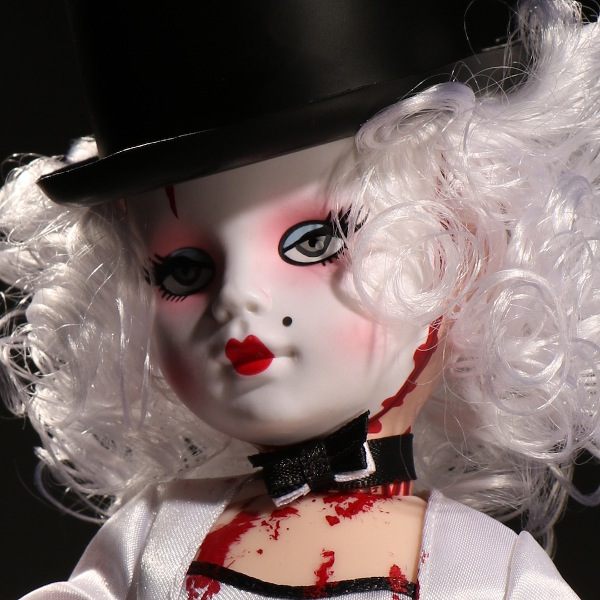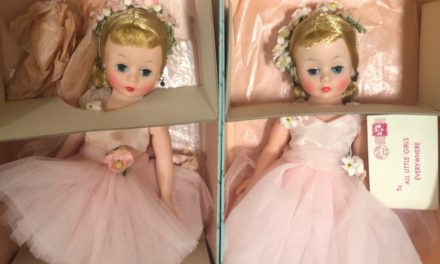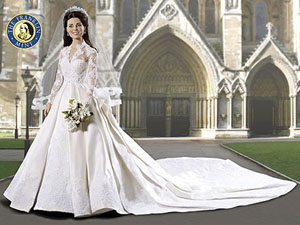Photos courtesy of Mezco Toyz and Living Dead Dolls
Sigmund Freud seemed to have had a theory for everything, didn’t he? (Check out your Psych 101 textbook on the symbolism of cigars and bananas and tunnel entrances, for goodness’ sake!) The father of modern psychoanalysis also had a very solid impression of dolls. According to the good doctor, dolls were potential nightmare-makers because they played around with people’s notions of life and death.
For Freud, there existed a realm of consciousness called the “unheimlich,” the unhomely, or the uncanny. In his estimation, items that fit into this category caused feelings of anxiety, dread, and fear: “Whether an apparently animate being is really alive; or, conversely, whether a lifeless object might be, in fact, animate.” The psychological underpinnings of the “uncanny” is that an item seems oddly familiar, but its recognizable differences make it mysterious and unsettling.
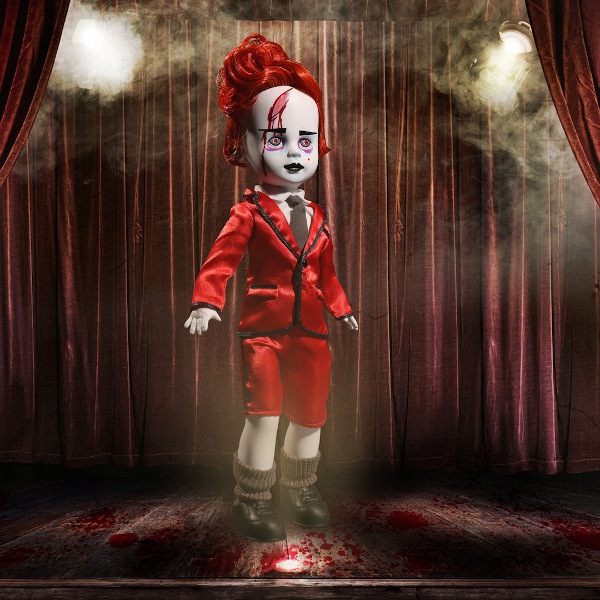
(Moulin Morgue)
In other words, whether it is a slumbering reborn baby doll or a tall, strident goddess creation, dolls have the ability to keep the viewer slightly off kilter and off guard. At Halloween time, this insecurity about the world of dolls is especially palpable.
Dolls as the villains in scary movies go off the Richter chart this time of the year. Whether the evil characters are dolls that have sprung to life from demonic possession, or they are voodoo or fetish dolls that are created to cause bodily harm, dolls rule the horror roost from the end of September to the final day of October.
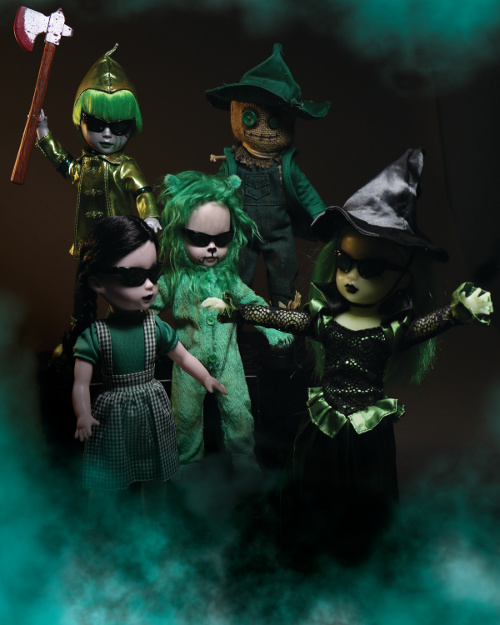
(Down the hellish road to Oz.)
Interestingly, though, there are folks who suffer from fear of these playthings all year round. The official name for it is “pediophobia” and it falls under the larger heading of fear of humanoid figures — this is known as “automatonophobia.” Back in the 1970s, when robotics was coming into its own as a field that is producing a blending of technology and faux humanity, a new term about doll paranoia came into the lexicon: the uncanny valley.
Borrowing “uncanny” from Freud — and I’d like to jokingly think “valley” from Jackie Susann’s Valley of the Dolls — this theory measures the chasm between comfort and distress when being confronted by a doll. In reality, the “valley” is the measured response of an individual upon encountering a robot that is more humanlike versus one that is more mechanical. It’s the difference that can be calculated from watching an episode of “Small Wonder” rather than “Lost in Space.” The pinafore-wearing, pigtail-sporting robot, Vicky, from that bizarre sitcom was the embodiment of a porcelain doll achieving life. The syndicated comedy show may never have elicited laughs, but it always did have its viewers cringing in discomfort.
As a matter of fact, the TV drama “Criminal Minds” used the notion of aberrant behavior in relation to dolls in one of its twisted, eerie episodes called “The Uncanny Valley.” In the 2010 outing, a mentally unstable woman turns other women into “so-called living dolls” because of a childhood trauma. Desperate to reclaim the porcelain dolls that she once owned in her youth, the uber collector makes living females into her pined-for dolls.
It is truly astounding that dolls — a simple child’s toy or a stunning work of art that is created to give pleasure — can have so many people feeling “creeped out,” “antsy,” or flat-out scared by their appearances.

(The formidable Resurrection lineup of Living Dead Dolls.)
Joining the other anxieties that dolls can create are the visible signs of distress that accompany “pupaphobia.” This is reserved for the individuals who feel dizzy or faint, clammy or lightheaded, when they are in the presence of a puppet. Yes, for every child who has ever giggled at the antics of Punch of Judy, there has been another person who honestly feared that Punch would jump out and punch him or her! It doesn’t matter if it is a marionette, a ventriloquist’s dummy, or a hand puppet, these characters are capable of eliciting nightmares and panic attacks.
While we doll collectors, creators, and enthusiasts can sit back and smugly shake our heads, we have to accept that there are people who are honestly terrified by what we love and adore. In years past, it might have seemed terribly ridiculous. However, with the very recent sightings of “creepy clowns” popping up all over the country, the doll phobias don’t seem so outlandish, do they? Especially when we’ve all lived through an election cycle that is equally frightening for both sides of the aisle.
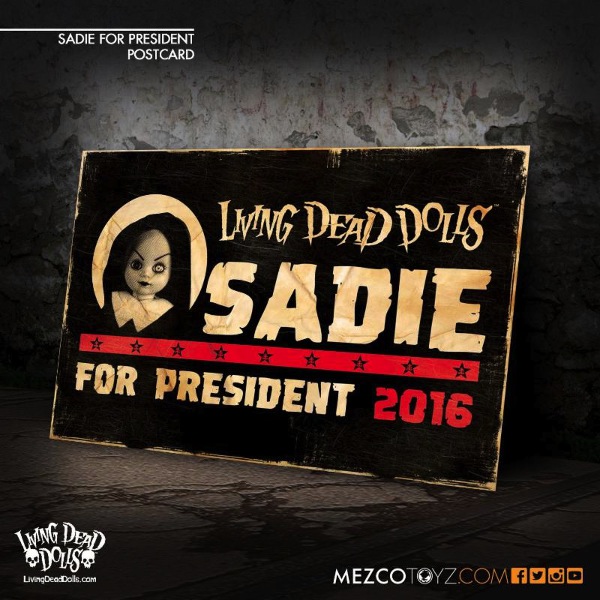
(A politician dying to get into office?)
If appearances of Bozo, Clarabell, and Ronald McDonald can cause shrieks, screams, and scenes of panic, it is not so far-fetched that dolls can elicit gasps and gulps. By the way, the official name for fear of clowns is “coulrophobia.” That syndrome, which used to be a punch line in a comic’s stand-up routine about ‘fraidy-cats, is now being reported on by news anchors and sent home in concerned principals’ parental newsletters.
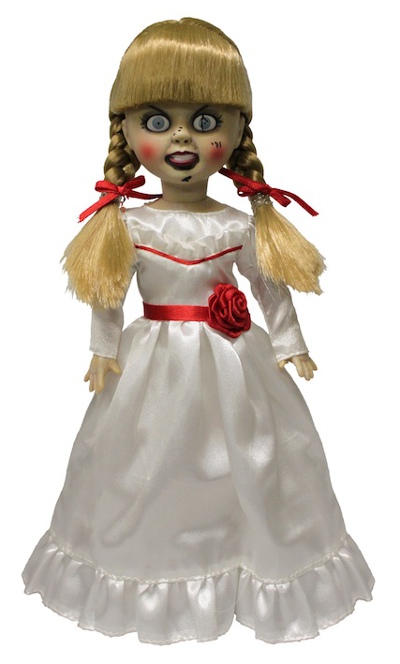
(A star of screen and screams, Annabelle from “The Conjuring”)
What a world! What a whirl! What a wicked and weird development!
Happy Halloween, one and all! Make sure to give your favorite doll a kiss!

